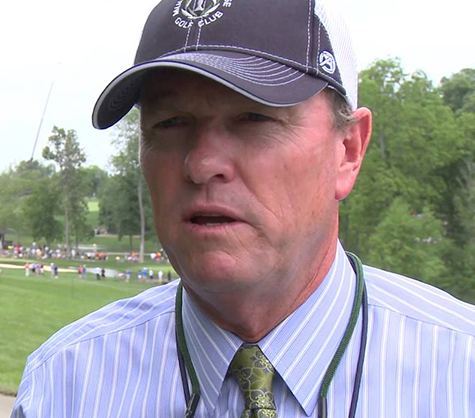(Reuters) – The New Year will usher in dozens of new rules in the biggest revamp of golf regulations in decades, even if at the recreational level it is more a case of catching up to what many casual players have been doing for years anyway.
Formulated by the U.S. Golf Association and the Royal & Ancient Club of St. Andrews, with input from professional bodies including the PGA Tour, the rules should among other things speed up the game.
“It’s the most significant rules change in the modern era, certainly the biggest this generation of professional players are going to see,” said PGA Tour rules official Steve Rintoul, who was on the committee that wrote the rules.
“This was a complete overhaul to make the rules easier to understand, eliminate silly penalties and be more player friendly.”
Some rules have been revamped for recreational golfers but will stay the same at the elite level. One important example is the procedure for a ball hit out-of-bounds or lost.
Under the current ‘stroke-and-distance’ rule, a one-stroke penalty is incurred and the player must return to the same spot to hit another ball, meaning a tee shot that results in a lost ball forces them to return to the tee for their third shot.
In reality, many recreational players instead drop a ball in the vicinity of where it was lost and play on.
In 2019, courses have the option of implementing a rule that will allow players to take a two-stroke penalty and hit from an equidistant point from where they estimate their ball to be lost or out-of-bounds.
In effect they can play their fourth shot from the fairway after an errant tee shot, instead of their third from the tee.
Another rule that should help recreational golfers is the option of accepting a two-stroke penalty for relief from a bunker.
At all levels of the game, players will now be able to repair spike marks on greens and while there has been suggestions that might slow down play, Rintoul disagreed.
“Players are already repairing ball marks,” Rintoul said. “It’s not going to take any longer to press down one or two spike marks on their line.
“If everyone’s allowed to repair the damage they’ve caused, greens will be much better throughout the whole day.”
There will also be no penalty for accidentally moving a ball on the green, while another change would allow players to putt with the flagstick in the hole and American Ryder Cup player Bryson DeChambeau said recently that he might try it, but Rintoul thought that experiment would be short-lived.
“I don’t think it’s going to impact professional golf,” Rintoul said. “The first time that Bryson’s ball hits the flagstick and doesn’t go in will be the last time he does it.”
Rintoul, however, thought one new rule dealing with damaged clubs could be problematic.
Players can currently replace a club damaged during the normal course of play, even if it has borne the brunt of their frustration.
The new rule will no longer allow players to replace the club during a round, which could cause issues as newer thin-faced drivers are developed, which tended to crack more often.
“We’ve had so many incidents of driver faces that have cracks, or are starting to cave in,” he said.
“From the tour side, six months from now this may be seen as the most controversial change.
“The first high profile tournament that the leader cracks a driver-head or cracks a shaft, and can’t replace it, it will certainly be a hot topic.”

